The Article
Sennheiser HDV 820 Headphone Amplifier Plus DAC: Keeping Your Balance
7th October 2017
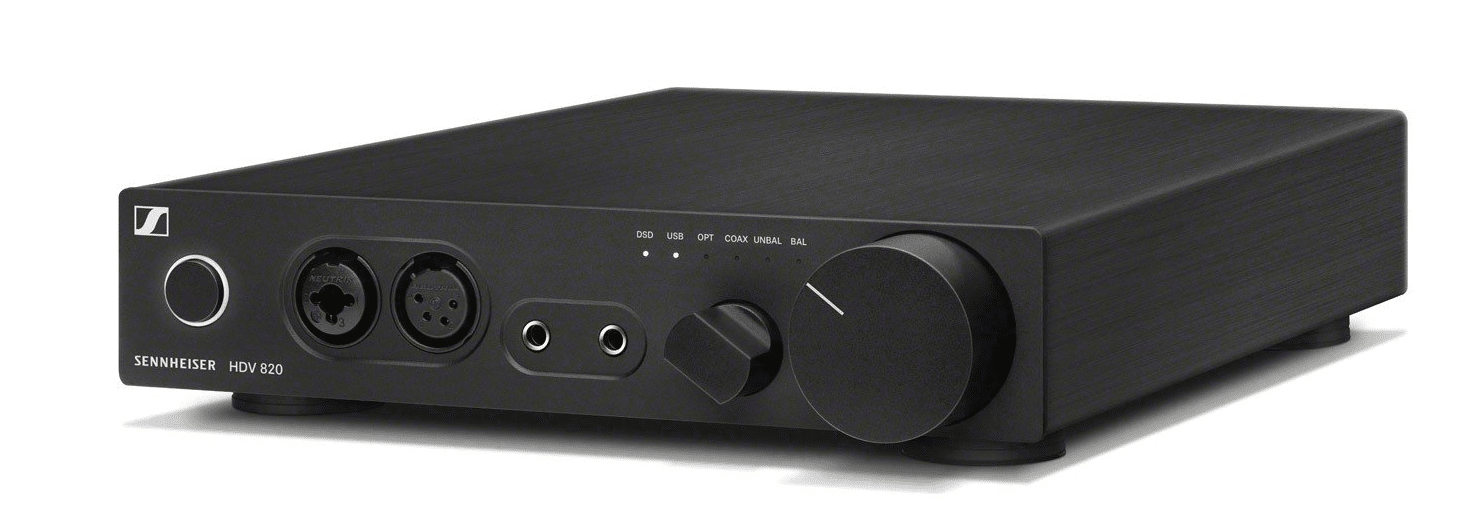
Presented in a strong looking chassis, the HDV 820 headphone amplifier with bundled DAC is reviewed by Paul Rigby
DACs are everywhere. It seems that they are destined to be retro-fitted to just about every piece of hi-fi and object know to mankind: amplifiers, CD players, T-Shirts, biscuits (check that crunch at 24bit/96kHz)…you name it.
Sennheiser includes one in its new headphone amplifier, the HDV 820. The DAC includes an ESS SABRE32 DAC, handling up to 32bit/384 kHz and also DSD256 files of up to 12.3 MHz.
But don’t let it divert your attention from the head amp itself, which is the main subject of attention here. The HDV 820 features a new anodised black finish with white LED lights. Audio outputs include XLR3, XLR4, 6.3 mm and a 4.4mm Pentaconn socket. A power button, volume knob and source selector knob are also present.
The HDV 820 also comes supplied with a country-specific power cable.
Balanced inputs and outputs can be found around the back with unbalanced inputs plus coax/optical and USB for the DAC. You’ll also find a rotary gain knob for RCA input (for most people, this will remain untouched but it’s there if you feel that the optimal gain needs tweaking).
Also in the box is a, quick guide, microfibre cloth, USB flash drive with instruction manual (as a PDF file) and driver software for Microsoft Windows operating systems.
Spanning 224 x 44 x 306mm, the unit weighs in at 2.25kg.
SOUND TESTS
I began by testing the headphone amplifier section with a vinyl version of The Fall’s Frightened from a first pressing of Live At The Witch Trials.
A number of elements hit me immediately. Firstly the bass was both focused and precise in its presentation. The percussion, on this track can sound a little loose and muddy on some head amps but the 820 tidied everything up and held and potentially wayward frequencies in check, giving the drums a succinct and concise feel but with enough punch and heft to drive the song along at pace.
Treble was not quite as delicate or as floaty on this solid state unit as you might find on a valve-based amp, expected yet still worth stating. That said, for a solid state design, the 820 had enough fragility to impress, adding that essential contrast to the power of the rest of the drum kit.
The vocal delivery was also relatively pithy and to the point, expressing itself with enough emotion to get the message across while maintaining a brisk pace to keep the song moving. The lead vocal sat in a relatively low noise environment which helped the ear to pick up subtle details in terms of vocal effort, the slight bending of vocal chords and the like. The space occupying the soundstage also aided the impact and effect of the lead guitar which should have sounded a little out of control and psychotic and was certainly allowed to be just that here.
The two subtle instruments in the arrangement, the organ and bass guitar, where tracked well by the 820, offering enough instrumental separation to allow both to breathe and take a full part in the mix. The extra bass enhancements around the organ only building its character in the song.
I used a pair of Sennheiser HD800S headphones during the test and so took the opportunity to change the cable from the standard RCA terminated cable to one terminated with a single XLR-4 plug. I then replayed The Fall track.
The difference was nothing short of staggering and the sonic result was a major leap upwards in terms of quality. Firstly, the soundstage increased in size by a factor of 10, or so it seemed. The air and space enhancement was terrific, allowing the treble-enhanced cymbals to really show their stuff, adding a fine elegance that just wasn’t there before with extended reverb tails to boot. Drums were now far more characterful and the previous edge to one particular drum sound was no longer edgy and slightly clinical.
The lead vocal offered a new swagger and almost lazy insolence (which is lead singer, Mark E. Smith all over, I reckon). The electric guitar benefitted from the newly expanded soundstage. The enhanced clarity allowed the ear to hear inside the manic noise of that the instrument was creating, so that you could hear the tiny changes in resonances. Meanwhile, those shy bass and organ sounds offered a richer and more mature response.
Really, while the unbalanced sound response was excellent using the 820 head amp, I am almost urged to advise you only to use this unit with a balanced headphone rig, otherwise, you’re losing value for money on your purchase and losing out on so much more information.
I then moved onto jazz and Gogi Grant’s version of the standard, By Myself. Her vibrato-rich vocal was successfully tracked by the 820. Her expressive delivery was easily portrayed, giving the vocal a sensitive and passionate response that was both warming, tender but also fervent in its approach. The jazz orchestra backing her benefitted by the wide and open soundstage while the spacious nature of the instruments meant that each offered a sense of precision and clarity that was a joy to behold. Bass provided a secure foundation while brass provided an impressive transient performance and even instruments low in the mix such as the piano could be followed by the ear without any real effort.
I then turned to the DAC portion of the unit, plugging in my MacBook and playing Ray Santos’ bossa nova-infused jazz and the track Candido at 24bit/96kHz. While there was a hint of solid state firmness in the midrange, a slight digital edge to the presentation (although this might have something to do with the relatively noisy MacBook being a source), I was impressed by the huge soundstage which provided plenty of room for this complex arrangement to apportion space to each instrument and voice. Picked strings of the acoustic guitar were detailed and crisp while the 820 successfully conveyed the metallic nature of the strings. Brass did the same job but the 820 also provided that essential organic edge, allowing the ear to know that a human was behind each. The trombone had a delicious vibrato and resonance, for example. Percussion in terms of bongos, congas and cymbals held an open and naturalistic response while the vocal group interjections allowed the ear to pick out individual voices easily.
Eric Bibb’s blues/gospel-based Meeting at the Building at DSD128 was was infused by detail and clarity. The extra large soundstage was essential to handle the gamut of instruments and voices and to make sense of the same. Bibb’s own complex guitar work was finely honed while the throaty and big hearted gospel solo voices reverberated with plenty of passion and zeal. Meanwhile more delicate instruments such as the accordion and mouth organ flowed with little supposed effort while maintaining a sense of precision.
I moved away from my MacBook to the Astell&Kern AK120 and played Grand National’s Talk Amongst Yourselves at 16bit/44.1kHz. Again, that solid state shine was evident as a background to the play but the XLR-based play from the 820 provident a delightful and incredibly musical replay that urged you join in: foot tapping, head nodding, dancing around the room, adding a slice of harmonic singing…you know the sort of thing. The 820 conveyed the joy of the music.
CONCLUSION
Despite just a sliver of hardness in terms of the midrange personality, the Sennheiser HDV 820 headphone amplifier/DAC offers a detailed and focused output. It’s relative low noise performance in its single-ended configuration is surpassed in spades during XLR use. I say again, if you’re looking at buying the 820, only do so if you are heading towards XLR/Balanced headphone play. Only then will you understand what the 820 is really doing here and only then will you truly have a ball, in sonic terms at least. Offering a low key look and solid build, the HDV 820 is a top quality headphone amplifier with an excellent DAC that provides enhanced value for money.
SENNHEISER HDV 820 HEADPHONE AMPLIFIER/DAC
Price: £2,100
Website: en-uk.sennheiser.com
GOOD: build, flexibility, XLR performance, low noise, focus, clarity
BAD: solid state midrange edge
RATING: 8

REFERENCE
Origin Live Sovereign turntable
Origin Live Enterprise 12″ arm
Transfiguration Proteus cartridge
Sennheiser HD800S headphones
Icon PS3 phono amplifier
Leema Elements CD Player
Aesthetix Calypso pre-amp
Vertex AQ & Atlas cables
Harmonic Resolution Systems Noise Reduction Components
All vinyl was cleaned using an Audio Desk’s Ultrasonic Pro Vinyl Cleaner


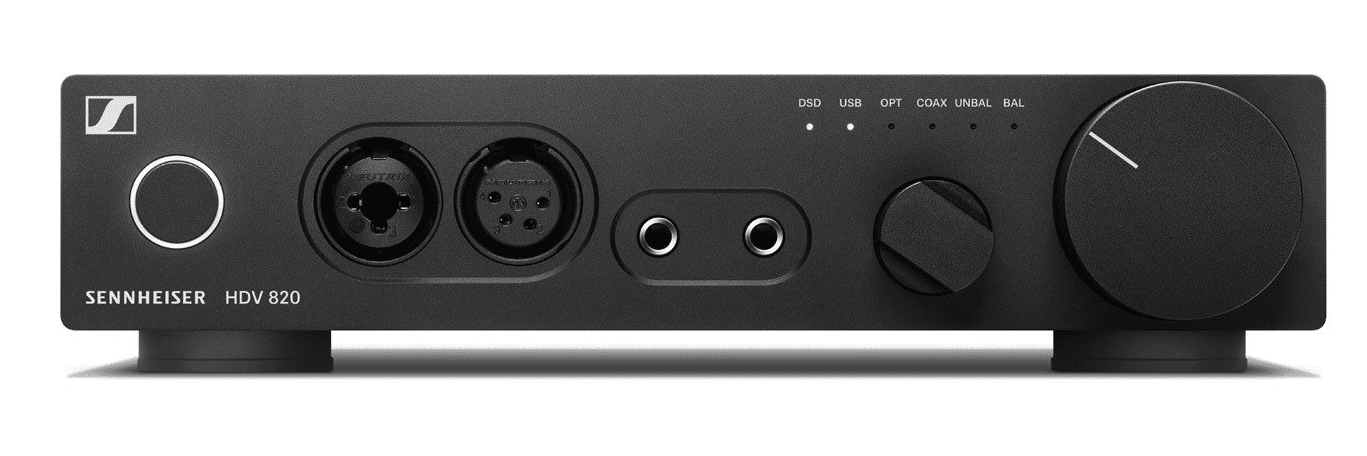
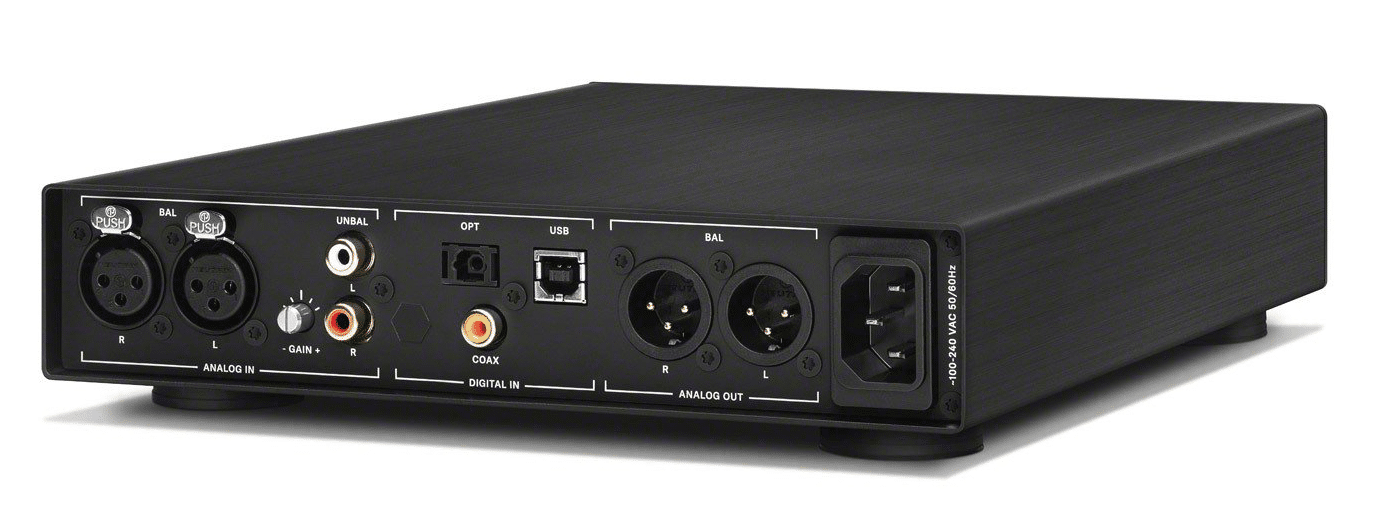
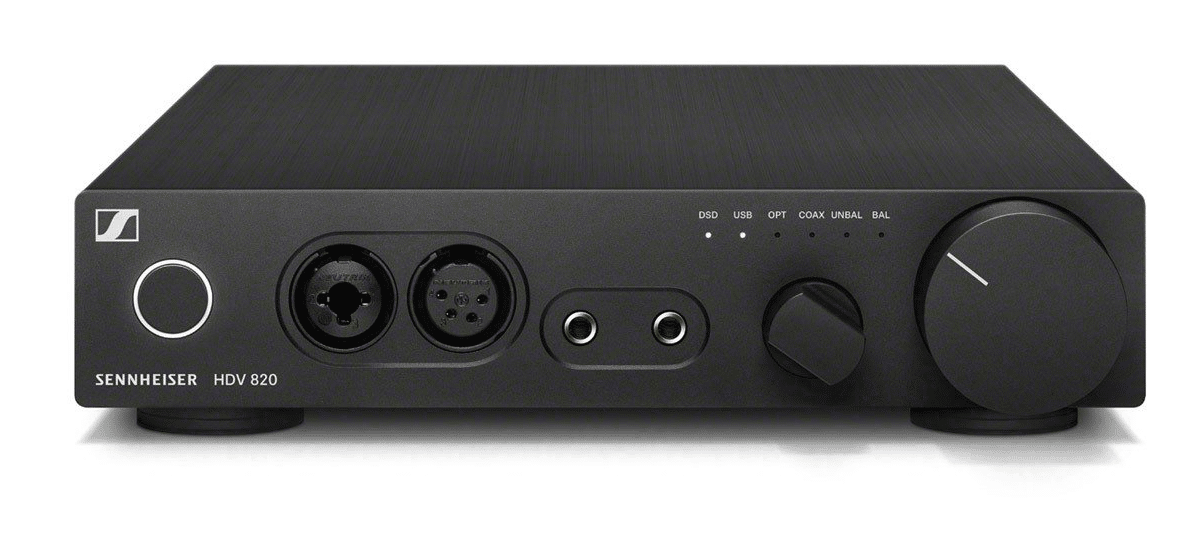
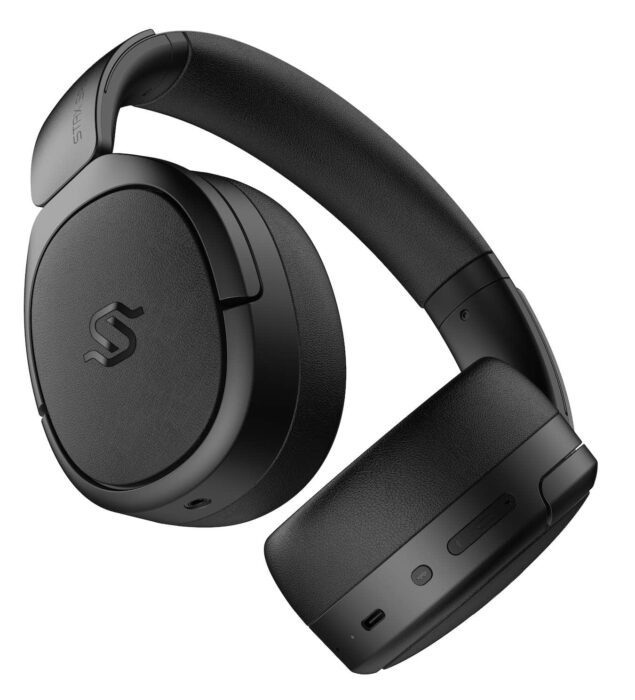
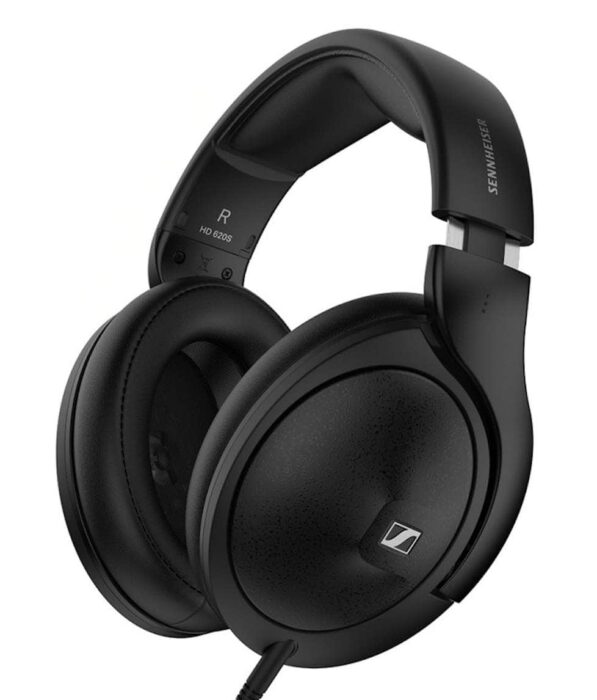
Hello Paul,
Why not spread the reviews more. Sometimes i wait for weeks to get a review and now four in a couple of days. But then again, not everyone visits this site on a daily basis i guess. Just an idea. Nothing more. Love your work.
Best regards
Geoff
Problem is that I also write for print mags and other websites so I can’t devote all my time to this site – at least, not yet – hence, all of the time is not my own to plan in a tidy fashion. Hopefully that will change and evolve in the future.
I didn’t know that. I thought you were out of the rat race is this was your baby now. But as you say maybe one day. I dream about writing about hifi. Maybe one day.
Hi Geoffrey – sorry for the reply delay, just moved house! I began this site because I saw the trouble print media was in and how strong social media was becoming in terms of editorial. The original idea was to dip my big toe into the digital waters then make a slow transition, following the readers I suppose as they do the same. Currently both markets are in a fund sort of balance. Neither been wholly dominant. Which is why I still address both areas.
Hello,
No problem. Good luck in your new home. And a new listening room! Great stuff.
Best regards
Geoffrey
Thanks Geoffrey 🙂
I’ve been waiting for this for a while and recently purchased the Chord Hugo 2 to pair with my Focal Utopia but there doesn’t seem to be much low end, bass but the resolution of this device is amazing. Does this have a good punch to the low end and would I be missing much if I were to get this device?
I think you’ll be happy with the bass on the Sennheiser, Joseph.
Hi Paul: An informative review -on several counts.
In todays’s premium amplification offerings (both Tube & SS) I’d caution the use of an expected SS/Tube bias, as you stated:
” Treble was not quite as delicate or as floaty on this solid state unit as you might find on a valve-based amp, expected yet still worth stating.”
I suppose in your favor is the interpretation of “floaty”, ‘delicate’ on the other hand quite obvious.
There are many variables that could account for this SS’s upper octave “sheen”, yet we were uniformed as to what those factors might be. On the other hand, it may be a ‘feature’ of this model.
Today’s best SS/Tube have a remarkable tendency to sound like the other; what was once the sole provenance of vacuum tube.and vice-versa can now be difficult to ascertain when listening to either.
A L$2K piece of compact Amp/DAC kit (as the one reviewed here) represents a considerable investment and fits squarely in the price range that should define the best available. (Because there are even more expensive offerings out there, this should not be confused with better sounding performance -or even internal parts sophistication or quality)
Moving on, you eventually switched to a ‘Balanced’ headphone cable, but we were not informed whether it was the same (brand/model), or something entirely different ? That alone could have been the difference you were reporting -not so much the amps Balanced circuits, but rather the difference in cables ! A potentially costly oversight.
If this were a $200.offering , your review would be fitting. In one that is valued at 10X ($2K), it’s the job of the professional analyzer to take on a decidedly more thorough evaluation. In today’s day/age, high-priced hi-fi gear is thrown around (proudly it seems) everywhere, yet I’ll remind all that $2k (whether Euro, BPD or US/Canadian) dollars is a not inconsiderable amount. We should all step back a moment and give that some real thought. That, and scour the Net for a suitable alternative, thus offering up a timely segue:
Paul finishes with, quote: “Offering a low key look and solid build, the HDV 820 is a top quality headphone amplifier with an excellent DAC that provides enhanced value for money.”
I’d say (if it’s solely/primarily a headphone amp of interest) consider the delightful Emotiva A-100 (basX) amp/headphone-amp ($229. US$ 12/2017) or the deluge of available/comparable DAC/Amps swarming the Internet -for not much more.
That, my friends, would represent authentic ‘Value’. (Enhanced Value For Money, in fact )
peter jasz
Thanks for your considered reflections on the review. Just to fill the gap – it was the same set of headphones, just a different cable. Done on purpose to see how the unit’s change to a balanced signal change the personality of the headphones themselves.
i have the same setup, hd800s with official balanced cable and hdv820. i cannot be more satisfied. i have HD800s, HD650 and T5P. I used to be very satisfied with HD650 or at least thought that it was only slightly below HD800s, but hdv820 really helps show the vast difference between these two. (i have no balanced cable for hd650). thank you so much for the review, it helped me to make the decision to buy it.
No problem, Max. Glad I could help.
Hi Paul.
I very much enjoy your reviews, so thank you for sharing your thoughts and experiences with us.
I have recently purchased a pair of HD800S headphones, and I am in search of a decent DAC & amp for these headphones.
Based on your experiences, would you consider the HDV820 or Schiit Mjolnir 2/Gungnir a better pairing for the HD800S?
Thanks Matthew, the 820 is excellent and I would always recommend it but – if push comes to shove – the Schiit provides better value for money and the edge in terms of sound quality methinks.
Great! Thank you Paul!
Hi 🙂 Thanks so much for your excellent review! Do the HD800S headphones come with the XLR-4 cable that you used or did you have to purchase that cable separately? Cheers 🙂
Thanks for your question Aurla. That’s an optional accessory. Scroll down this link for confirmation: https://en-uk.sennheiser.com/high-resolution-headphones-3d-audio-hd-800-s
My question pertains to the sound stage and dynamic intensity of the amp. I had the same experience going to balanced xlr in terms of clarity, focus, and a much more refined resolution.
The dynamics and relative intensity of the instruments as a cohesive unit lost their musicality however. It felt like I had an extremely resolving, crystal clear microscope to look through, that lost the forest for the trees. When I switched my Hd800s from the (hdv820 balanced) – over to – (ps audio gcha dac/amp), while listening to classical, for instance, Tchaikovsky Symphony No 4 (Mravinsky, Op 36) the relatively flat dynamics of the hdv820 appeared to affect the sound greatly. The horns blare and strings vehemently clamor however it doesn’t have the same immensity. I have the same experience when listening to this track on my 100 dollar computer speakers.
The other end of that issue, is that with most music recorded at a smaller scale, the gcha sound stage breadth makes a regular rock band sound disconnected. Are headphones really finicky in terms of synergy for genres? I would appreciate any insight of experience of yours in this regard.
Hi Singh – headphones are no different to speakers in terms of the wide variation in sonic signatures they offer. I’ve heard headphones that are quite bright in tone (Grado comes to mind), bass heavy (I’m thinking of the high-end Denon design) and more balanced (some of Sennheiser’s models fit there). But even within brand names, there are variations (Sennheiser again). Which is one reason to read reviews and, even more importantly, undertake personal demos.
Hi Paul, thanks for the review. I loved it. I do have the 4.4 mm pentaconn “balanced” cable with the HD800S. Do you think the XLR has an advantage over it? Even though they’re both a balanced circuit? If so, I will make the upgrade. Thanks!
I haven’t done an A-B but I would have thought that XLR and 4.4 would be pretty similar or the same, Nath.